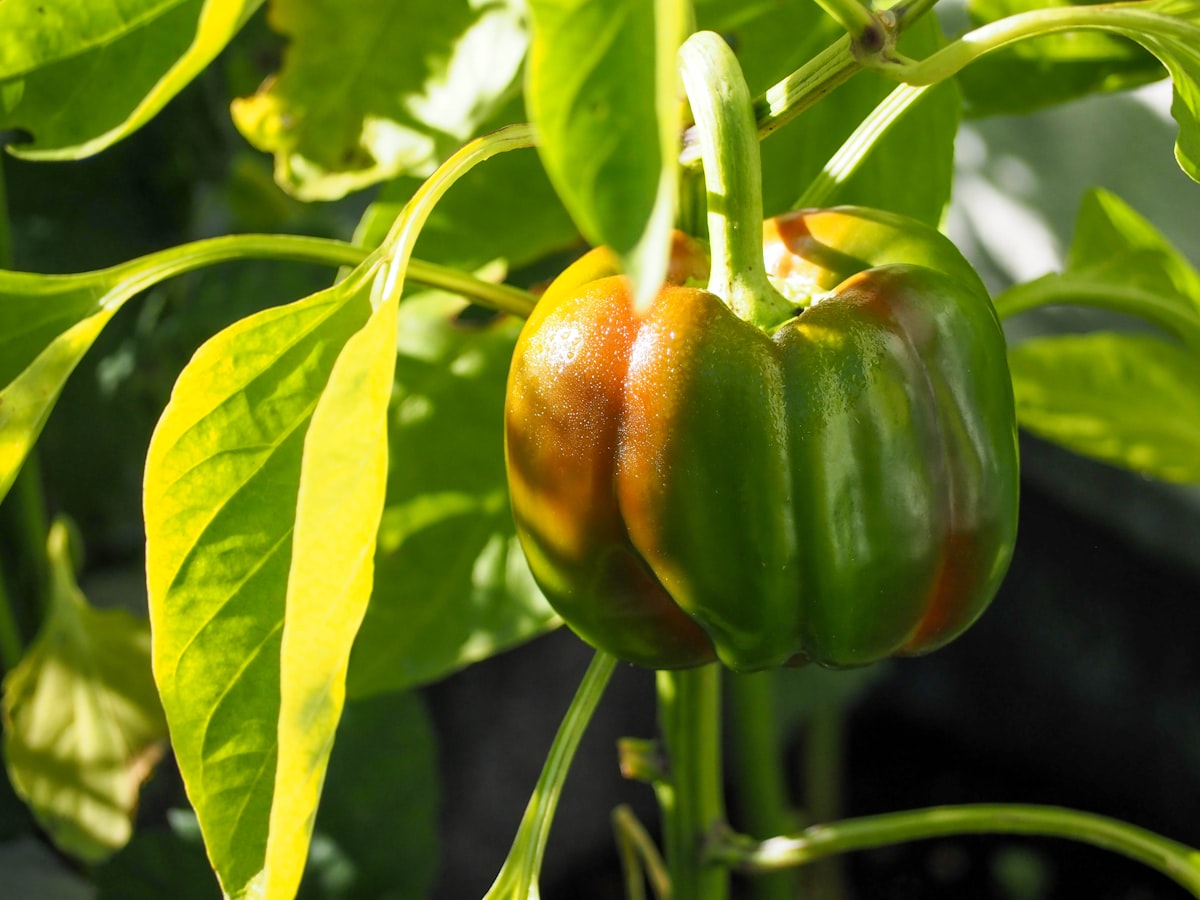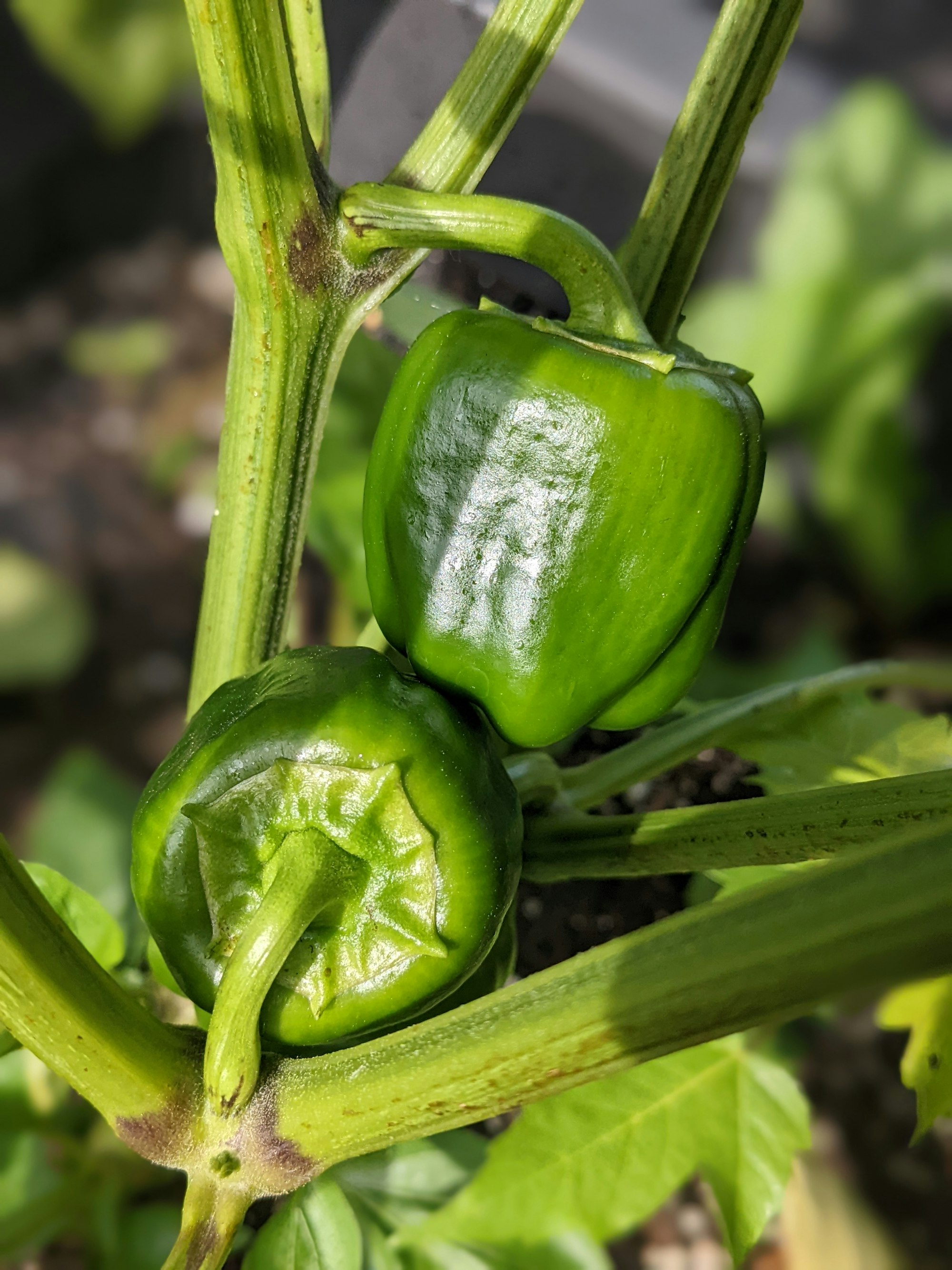How to Grow Bell Pepper
Growing bell peppers can be a rewarding addition to your vegetable garden, providing a colorful and nutritious harvest. These pepper plants thrive in warm weather and are known for their crunchy, sweet taste, making them a popular choice for raw consumption and cooking.

Table of Contents
Cultivating bell peppers, scientifically known as Capsicum annuum, can be achieved through planting seeds or transplanting specimens purchased from a garden center.
By understanding the unique requirements for soil, climate, and watering, you'll be well on your way to producing a bountiful crop of bell peppers in various colors, such as green, red, yellow, and even dark brown or purple.
About Bell Pepper Plant
Bell peppers, also known as Capsicum annuum, are part of the nightshade family and come in various colors ranging from green, red, yellow, and orange to even purple and brown.
These sweet, non-spicy pepper plants are popular in raw and cooked dishes, adding flavor and a satisfying crunch.
As a warm-weather crop, bell pepper plants thrive with full sunlight, slightly acidic to neutral soil pH levels, and consistent watering.
You can nurture your pepper plants to produce fruit in an array of vibrant hues, offering an aesthetically pleasing harvest and a source rich in vitamins and nutrients.
Growing Bell Pepper
Before planting your bell peppers, choose a sunny garden with well-draining soil.
Mixing in compost or well-rotted manure prepares the soil to enrich it and promote healthy growth.
Start by planting your seeds indoors in small pots or seed trays filled with high-quality potting mix about 6-8 weeks before the last expected frost in your area.
Keep the temperature around 75 degrees Fahrenheit for optimal germination, and ensure that the soil is consistently moist but not overly saturated.
Once your seedlings have developed two sets of true leaves and outdoor temperatures have consistently reached 75 degrees Fahrenheit during the day, it's time to transplant your bell pepper plants to their final location in the garden or larger pots.
Plant them 18-24 inches apart and provide them with support, such as stakes or cages, to help bear the weight of the mature fruit.
Water your bell pepper plants thoroughly after transplanting to help them settle in and avoid transplant shock.

Caring for Bell Pepper
Sun and Temperature
Bell peppers require 6 to 8 hours of sunlight daily, so plant them in a spot with full sun exposure.
They thrive in temperatures between 70-85°F (21-29°C), so protect them from frost or extreme heat during early spring or late summer.
Water and Humidity
Water your bell pepper plants consistently, providing about 1-2 inches of water per week.
Keep the soil evenly moist but not waterlogged, and adjust your watering routine based on local humidity levels.
Soil and Fertilizing
Choose well-drained, loamy soil rich in organic matter for best growth. Maintain a slightly acidic pH of 6.0-6.8, and fertilize bell pepper plants with compost or aged manure.
Additionally, use a balanced fertilizer (like 10-10-10) during the growing season to provide necessary nutrients.
Pruning and Propagation
Prune your bell pepper plants to enhance air circulation and promote stronger branches. Remove any small or weak branches during the early growth stage.
For propagation, start seedlings indoors for 6-8 weeks before transplanting them outside after the risk of frost has passed.
Troubleshooting Plant Problems
Inspect your plants for common issues like nutrient deficiencies, pests, or diseases.
If you notice yellow leaves, it could be due to a lack of nitrogen or overwatering, while deformations or discoloration might signal a pest infestation.
Practice crop rotation and use organic alternatives to pesticides for long-term plant health.
Conclusion
Following these guidelines, you can successfully grow and care for bell pepper plants in your garden.
Enjoy the flavorful and nutritious peppers in various cooking dishes and maintain a bountiful harvest throughout the growing season.
Frequently Asked Questions
What are the best companion plants for bell peppers?
Some good companion plants for bell peppers include basil, onions, and marigolds. These plants help repel pests and can improve the overall growth of your pepper plants.
What are the stages in growing bell peppers?
The main stages in growing bell peppers are seed germination, transplanting seedlings, flowering, fruit development, and harvesting. It's essential to care for your plants during each stage to ensure healthy growth and a bountiful harvest.
How long does it take for a bell pepper plant to mature?
It usually takes about 75 days for a bell pepper plant to reach maturity at its green stage. Depending on the variety, The plant may require two to three weeks to develop fully ripe colors like red, yellow, or orange.
What steps are necessary to grow bell peppers from seeds in pots?
Start by planting seeds in a seed-starting mix about 10 to 12 weeks before the last frost date. Keep the soil warm and moist until seeds germinate, then transplant seedlings to larger pots with nutrient-rich soil. Gradually expose the seedlings to outdoor conditions before transplanting them into your garden.
How can I accelerate the growth of my pepper plants?
To speed up the growth of your pepper plants, ensure they receive adequate sunlight, water, and nutrients. Use a high-quality potting mix, provide support with trellises, and protect the plants from pests and diseases. Regularly prune your plants to promote bushier growth.
What are the most common issues that arise when growing peppers?
The most common issues in growing peppers include pests, diseases, and nutrient deficiencies. Aphids, spider mites, and other pests can infest your plants. Diseases like bacterial leaf spot and fungal infections can also pose a threat. Maintain proper care and address these issues promptly for healthier plants.


